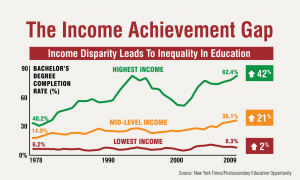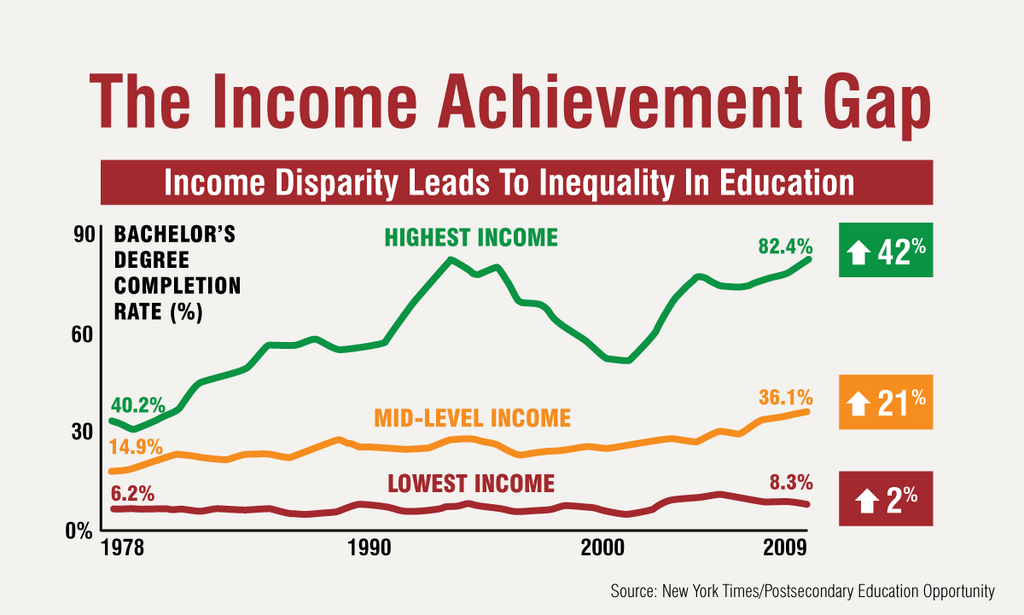 Over the last few decades, differences in the educational gap between the students of high and lower income families have grown. On average, the rich families out perform students from middle-class families. Children that are underprivileged reach achievement levels that are close to four years behind wealthier peers. But what about the achievement gap now being created within the middle class?
Over the last few decades, differences in the educational gap between the students of high and lower income families have grown. On average, the rich families out perform students from middle-class families. Children that are underprivileged reach achievement levels that are close to four years behind wealthier peers. But what about the achievement gap now being created within the middle class?

High-income families tend to focus on what it takes to be successful in school. Today educational success is much more important than in the past. Even though middle class families are investing time and money in their children, they are not doing so as quickly and as concentrated as the rich. The achievement gap is now an issue between the upper-middle and the lower-middle class.
Higher-income families:
• Increase their spending on enrichment activities.
• Believe in early childhood education.
• Attend back to school night for their children.
• Listen to audio books.
• Watch limited television.
• Read educational books.
• Exercise daily.
• Participate in non-sport related extracurricular activities both in and outside of school.
• Attend teacher/parent meetings.
• Have nutritional meals together.
Schools put more effort in with students from higher-income homes because they get more pressure from demanding parents.
Early childhood education that promotes cognitive and social development is on the rise. The gap begging before kindergarten must be closed before children enter formal education. It is time to take a closer look at children from the time they are born to the age of three for exposure to educational development. Infants need verbal interaction and proper nutrition for mental and physical development.
A few steps to improve student achievement were considered at Indiana’s Education Roundtable:
• Provide schools and parents with data and research on development needs and current achievement levels.
• Invest in early learning programs, methods, and strategies.
• Involve families as partners in creating programs and policies.
• Provide technical assistance, direction and financial support to schools and students that do not meet required standards.
• Accept differentiated learning in all students.
The widening achievement gap is a symptom of many trends that are created by a widening income inequality. This symptom comes with real consequences. Our schools cannot be expected to solve the problems income inequality creates. They can only be a part of the solution.
Schools across the nation are eliminating gaps in achievement through a concentration on clear and consistent goals, strategies, and leadership. Schools are incorporating a rigorous curriculum with clearly defined learning goals that include interventions needed by some students.
It has been too easy to say that the achievement gap is simply a problem for the poor or for minorities. That is a mindset of the past and ignores the reality that we are all affected by this newly created gap.



